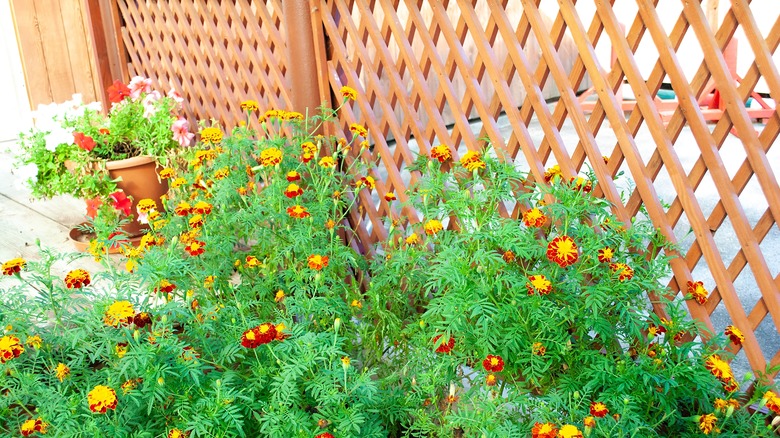Hide Unsightly Areas Of Your Backyard With A DIY Wooden Trellis Screen
There is nothing better than enjoying your backyard paradise, but it can be a little lackluster when you are stuck with unsightly areas cluttering up your otherwise lovely view or neighbors that are just a little too close. The cost to build a privacy fence is not cheap, and in a situation where you just need a few feet of privacy to shield an area from view, it is also overkill. Instead, DIY a wood lattice privacy screen to hide the less attractive areas of your yard (or your nosy neighbor) for a fraction of the cost, with the added benefit of also acting as a trellis for your favorite climbing plants.
Prep for creating your privacy panel by measuring the area to develop the size and layout of the screen, paying attention to spots to anchor the lattice panel to the house or another fence for support. Wood lattice sheets are usually four by eight feet but smaller sizes are also available. Once you know how large you are making the privacy structure, you will need to purchase the wood lattice sheets, enough 1x4 cedar boards to surround the sheets twice, and outdoor rated nails/screws for assembling and securing.
How to make a wooden trellis privacy screen
To build an outdoor privacy screen, start by cutting any wood lattice sheets down as needed to customize them to your particular space. Don't throw out the extra lattice – use these ideas to repurpose it around the house or use it in the garden as support trellises for your plants. Once you have the lattice sheets sized correctly, measure and cut the 1x4 boards to create a frame for both the front and back sides of each lattice sheet. Placing the lattice sheet between the two sets of cedar frames, nail the three layers together to cover the edges of the lattice. For more advanced DIYers, you could use a thicker board for the frame and route a channel on the inner side to slide the lattice seamlessly inside.
To attach to a house or fence, you can use an additional cedar board as a cleat, attaching it to the privacy panel on the back side and then screwing that into the house. You can use additional boards for bracing the panel on the second side for maximum stability. If you have more than one panel, affix the panels together with a cedar board and be sure to have them secured from both sides to support the larger structure. Lastly, you may want to consider burying fence posts for support if you are making a bigger setup, or using support garden stakes for added center support.
